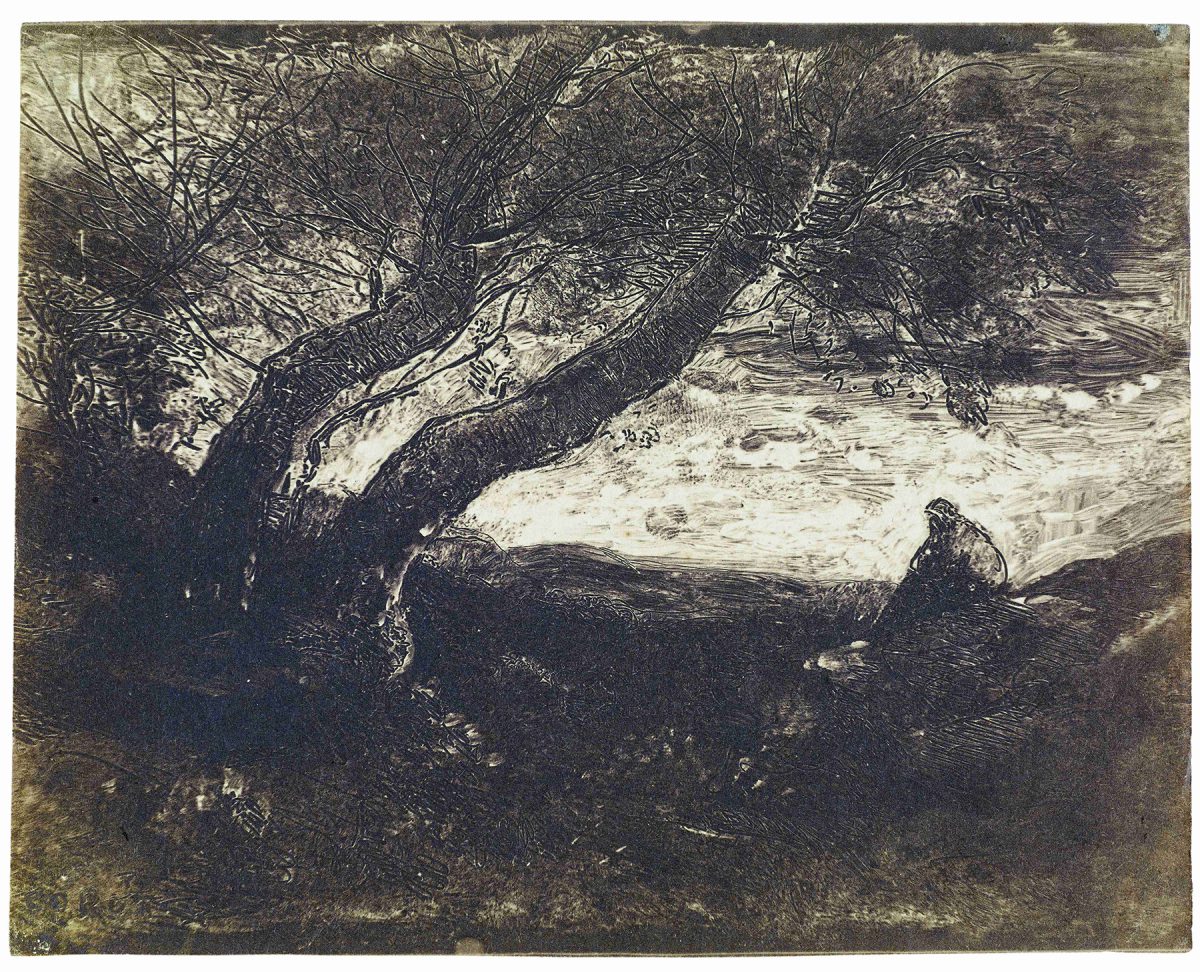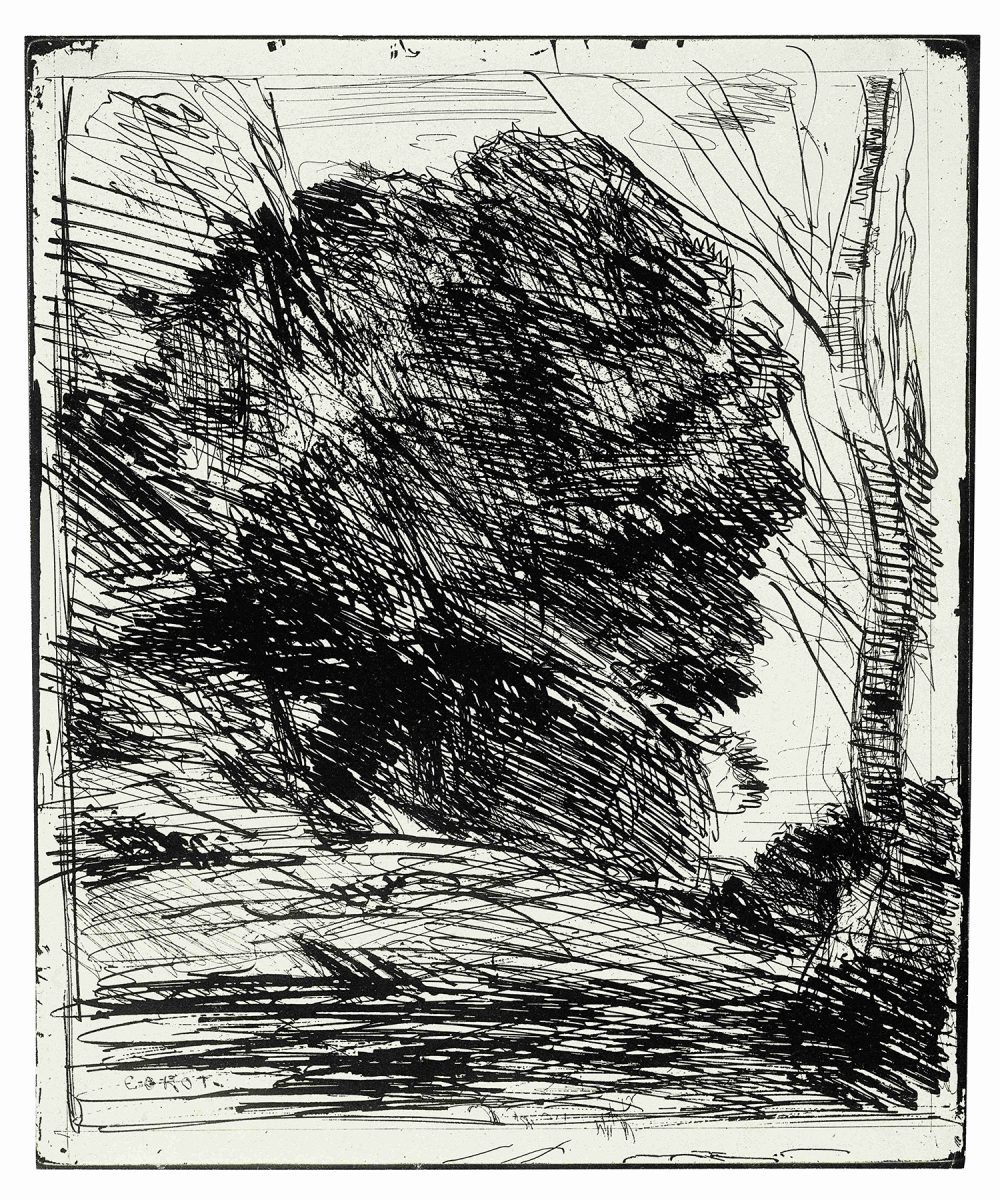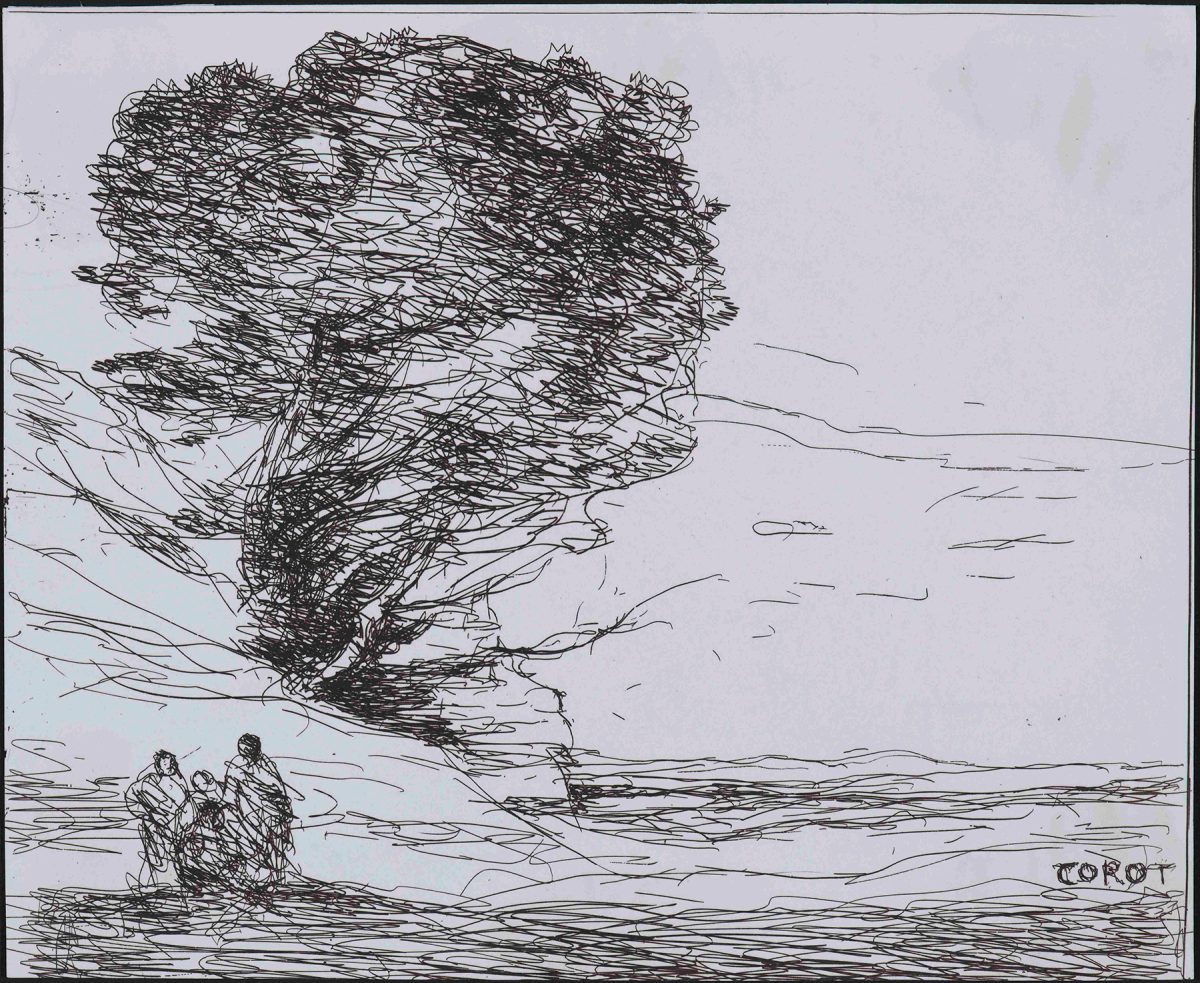The Fondation William Cuendet & Atelier de Saint-Prex owns more than 120 works on paper by Camille Corot. Most of these sheets were acquired in 1994 thanks to a gift from the heirs of William Cuendet, who, in addition to his interest in Dürer and Rembrandt, had a great passion for Corot. Further, between 2000 and 2005, Gérard de Palézieux donated 30 prints by Corot to the Foundation’s collection, including the album Douze croquis & dessins originaux sur papier autographique and a number of cliché-verre prints. It was in 1853 that Corot mastered this innovative technique, in which the artist draws with a point onto a translucent glass plate covered with a layer of collodion. The artist uses the plate to cover a piece of light sensitive paper, which is then exposed to create the image. Most of Corot’s work as an engraver was done using this technique, which allowed him great freedom in capturing special effects of light. Several artists at the Atelier de Saint-Prex used this technique, though perhaps none more notably than Pierre Schopfer.
A major figure in 19th century French painting, Camille Corot played a leading role in the revival of the landscape genre. Born in Paris in 1796, the son of a Burgundian father and a mother from Fribourg (Switzerland), Corot initially helped his father in the cloth trade. Attracted to painting, the young man enrolled in evening classes at the Académie Suisse, and in 1822, at the age of twenty-six, gave up his commercial career to pursue the fine arts. He first studied with the painter Achille-Etna Michallon, who encouraged him to study from life, and then with Jean-Victor Bertin, who taught him the codes of neoclassical landscape painting inherited from Poussin and Claude Lorrain.
During his formative years, Corot travelled around the Île-de-France and Normandy regions, making numerous sketches of the landscapes he saw. His development continued with his first major trip to Italy (1825-1828). He then began to exhibit at the Salon, but he was careful to present mainly "composed" (as opposed to plein air) landscapes, which were more in keeping with the standards of the time. In the ensuing years, Corot visited yet more regions of France, made two further trips to Italy (in 1834 and 1843) and ventured to Switzerland, Belgium and Holland (from 1853 to 1854). Long admired by his peers and by eminent critics such as Théophile Gautier and Charles Baudelaire - who at the Salon of 1846 highlighted his work’s “harmonist” quality - Corot finally found popular and commercial success in the 1850s. His reputation assured, Corot worked tirelessly until his death. On the fringes of the artistic schools of his time, he created a delicate but rich body of work that would have a decisive influence on future painters, including those of the Barbizon School and the early Impressionists.
Corot had been interested in printmaking since the 1820s. He initially worked with lithography but in 1845 turned to etching, creating fourteen prints that display his genius as a draughtsman. Corot's most important contribution to the history of engraving, however, was in cliché-verre, an engraving technique that involves light-sensitive paper and appeared at the same time as photography. Corot was among the first artists to make ingenious use of this novel process.




